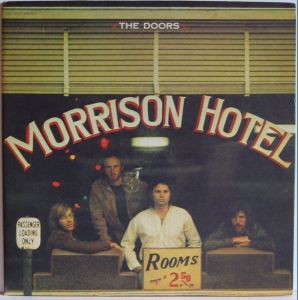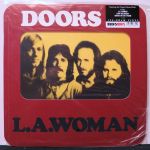More of The Doors
More Psych Rock
- With two seriously good Double Plus (A++) or BETTER sides, you’ll have a hard time finding a copy that sounds remotely as good as this vintage Gold Label pressing
- The sound is present, lively and tonally correct, with Jim Morrison’s baritone reproduced with the palpable weight and presence that the reissues barely begin to reproduce
- It’s tough (not to mention expensive) to find these early pressings with this kind of sound and reasonably quiet vinyl, but we found this one, and it blew our mind
- “Krieger, Ray Manzarek and John Densmore were never more lucid… This was a band at its most dexterous, creative, and musically diverse …”
- If I were to make a list of my favorite rock and pop albums from 1968, this album would definitely be on it, close to the top I should think
- Our review detailing the somewhat surprising shortcomings of the DCC pressing can be found here, and the story of how long it took me to figure out The Doors on vinyl (30 years or so!) can be found here
Here is THE BIG SOUND that makes Doors records such a thrill to play. Morrison’s vocals sound just right — full-bodied, breathy and immediate. The transparency makes it possible to easily pick out Bruce Botnick’s double tracking of Morrison’s leads.
For a thrill just drop the needle on Not To Touch The Earth. Halfway through the song the members have sort of a duel — Robbie Krieger wailing on the guitar in one channel, Ray Manzarek pounding on the keyboards in the other, and John Densmore responding with drum fills behind them.
On the average copy, the parts get congested and lose their power, but when you can easily pick out each musician, their part will raise the hair on your arms.
It’s absolutely chilling, and it will no doubt remind you why you fell in love with The Doors in the first place. Who else can do this kind of voodoo the way that they do?
Check out the piano on Yes The River Knows on side two (such an underrated song!) or the big snare thwacks on Five To One to hear that Hot Stamper magic.
The overall sound is airy, open, and spacious — you can really hear INTO the soundfield on a track like Yes The River Knows. The opaque quality that so many pressings of this album suffer from is nowhere to be found here.
Not only that, but you will not believe how hard these sides rock. (more…)


 See all of our Doors albums in stock
See all of our Doors albums in stock




